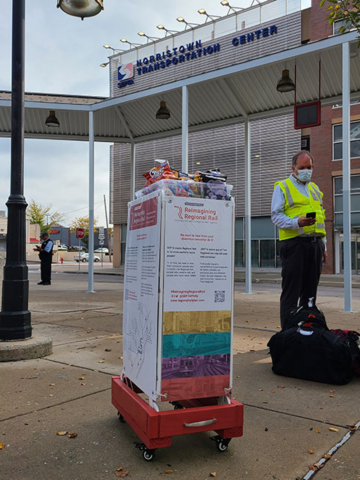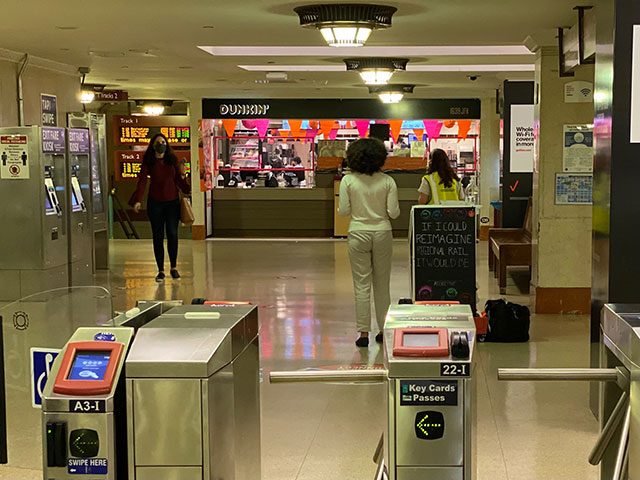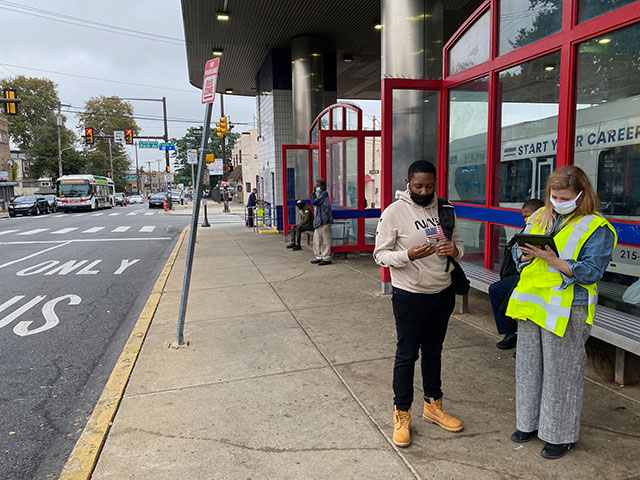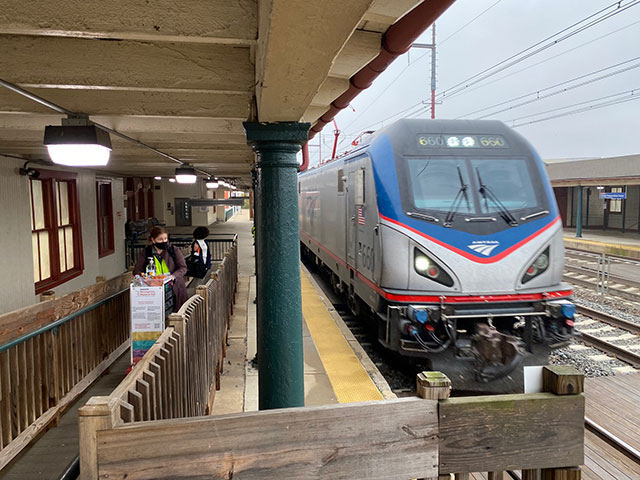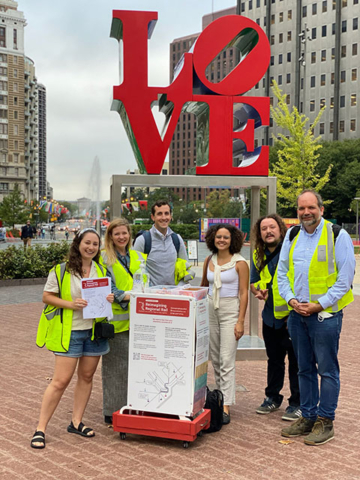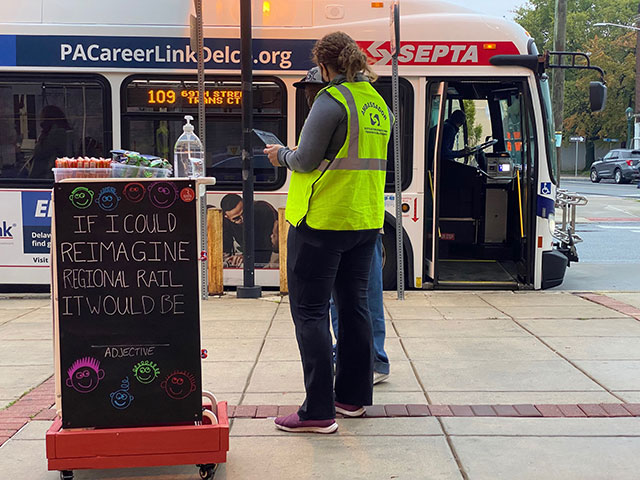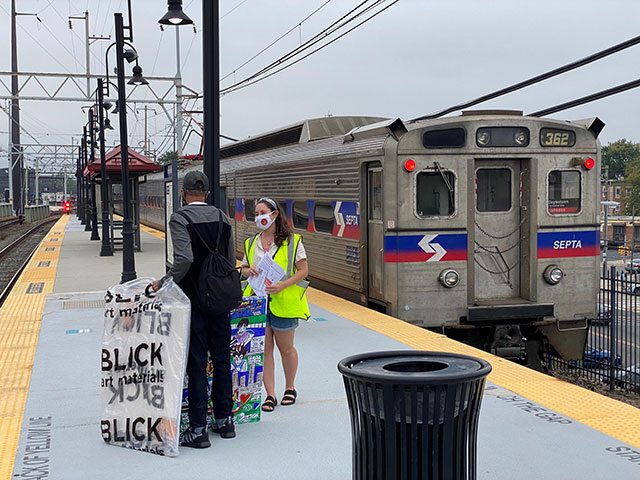12 Nov Defining Successful Engagement
MASITE – SEPTA & Connect the Dots
SEPTA and Connect the Dots explored this topic in a presentation about engagement best practices from the ongoing Reimagining Regional Rail project. This starts by defining engagement values and goals, working with the client to determine the appropriate tools for the process goals, and then applying them to ensure those goals are met.
Engagement Values & Goals
The past several years have seen a marked shift in outreach practices from one-way communication from government and institutions to citizens taking an active role in the design of public plans. Marisa Denker, co-founder of Connect the Dots, started the joint presentation with a discussion of this shift in procedures and planning culture. She discussed how Connect the Dots embraces this shift in its values and practices, working with clients to move them “up the ladder” of engagement from consultation to sharing and shifting power.
The first task in creating productive citizen engagement is to avoid a top-down approach, but rather to allow participants to be a part of building the plan together. This emphasis on co-design and co-creation is important to gaining the public’s trust. It is also crucially important to meet people where they are in order to engage with various groups of participants, and to set the expectation from the start that transparency and accessibility will be prioritized throughout the entire engagement process.
How It Looks in Practice
Ryan Judge, SEPTA’s Director of Strategic Planning & Analysis at SEPTA emphasized the importance of customizing engagement and getting people involved. “That concerted effort of reaching people where they are and doing targeted outreach is really important for us and particularly for transit advocacy,” Judge said. “We have advocates that are very vocal and very willing to participate and that’s great for us, but there are tons of people who aren’t as vocal and aren’t as willing to jump and shout when there are things that could benefit them.”
Giving people the chance to be a part of the building process rather than just providing feedback makes all the difference. “Listening and absorbing that information, not just passively, but actively engaging them, pays out,” Judge said.
The Reimagining Regional Rail project has proven to be a good example of how meeting transit users where they are – in the SEPTA system – increased the range of participants. In one month of engagement, SEPTA received more than 5,100 online survey responses. But the survey responses weren’t telling the full story, underrepresenting women and people of color utilizing the system.
By utilizing initial survey data to determine pop-up locations, CtD and SEPTA were able to include more information from underrepresented participants, and ultimately shifted the survey responses to be more reflective of Regional Rail’s Ridership.
Over the course of a two-day pop up event, SEPTA and Connect the Dots were able to talk with close to 2,000 participants, utilizing early survey data to direct the pop ups in locations that were underrepresented in survey results. These pop-ups increased the share of participants identifying as female from 41% to 50% within a few days. This was an important statistical shift, because SEPTA’s data estimates two-thirds of regional rail ridership is female.
Taking the Next Step
Engagement moves at the speed of trust, and it is important to build a sustainable and effective engagement process with consistent contact and iteration. To continue the groundwork laid by the initial engagement, the next steps with SEPTA’s engagement team will focus on building deeper relationships with neighborhood groups and having longer conversations with demographics underrepresented in the initial survey data through focus groups. The information collected will also inform the tools included in the next phase of engagement, and the execution of that round. Stay tuned for more lessons learned!

